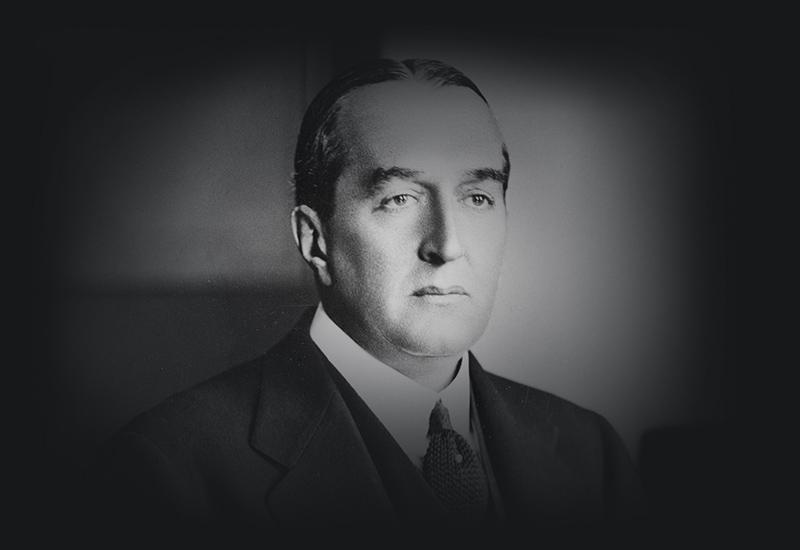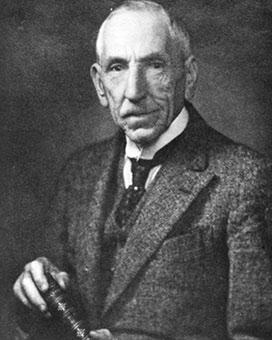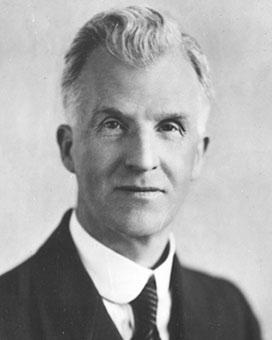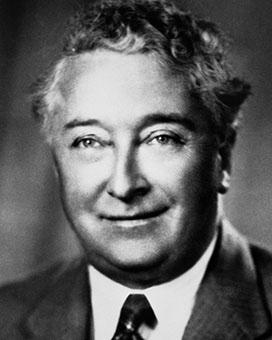Stanley Melbourne Bruce’s first federal election was the by-election for the seat of Flinders, then a semi-rural area on the eastern side of Port Phillip Bay in Victoria. He then campaigned in 6 House of Representatives elections, 5 of them successfully. In 1929, he became the only Australian prime minister to lose his own seat in a landslide victory for Labor, when the government of James Scullin took office. Bruce lost Flinders after the distribution of preferences. In 1931, he regained the seat, but resigned in 1933.
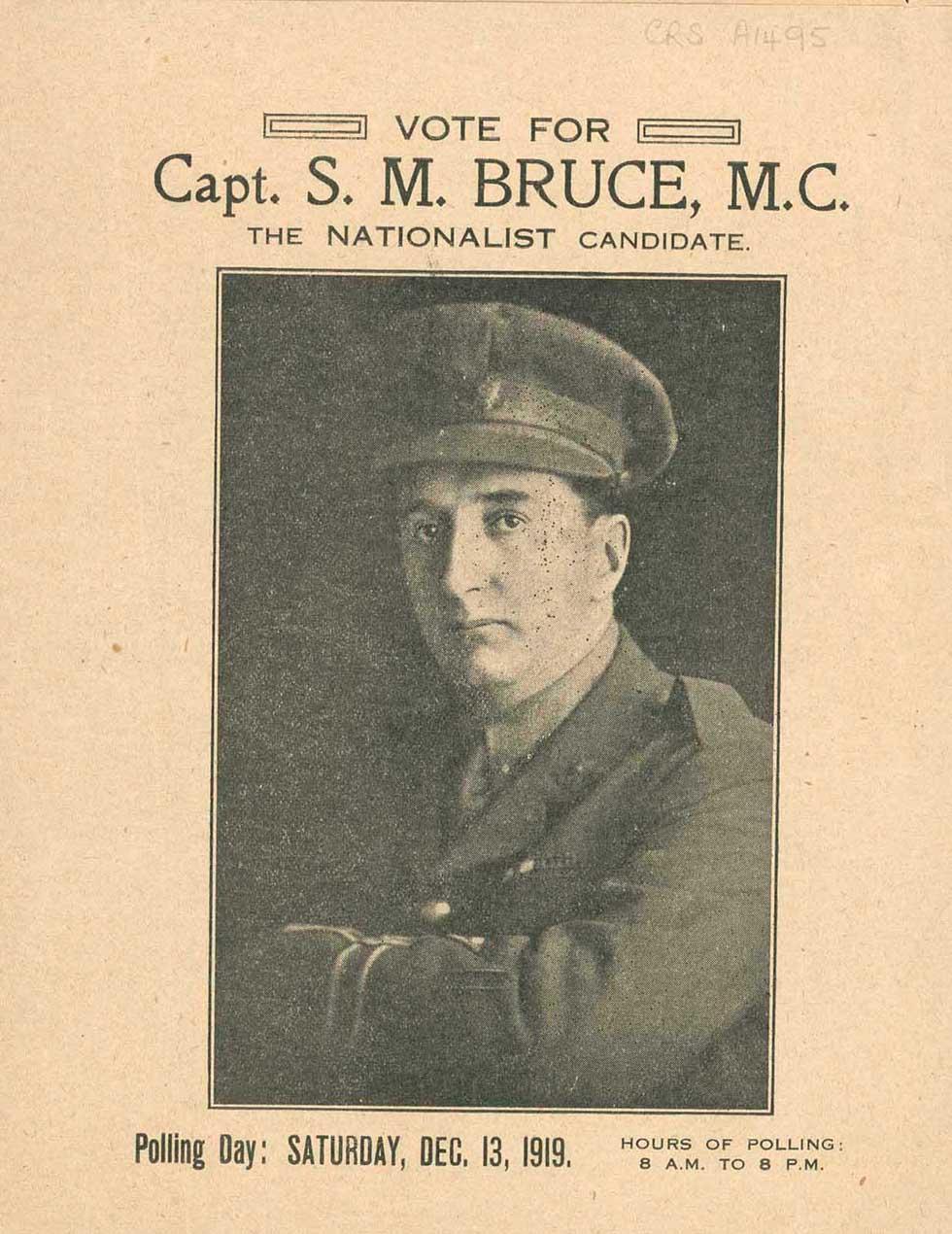
Nationalist Party pamphlet for the 1919 federal election. NAA: A1495, 1, p. 1
11 May 1918
Bruce won the House of Representatives seat of Flinders (Victoria) as the Nationalist Party candidate in this by-election. He served as a backbencher in the Hughes government for 18 months, until the next federal election.
13 December 1919
This was the first federal election to use preferential voting, a change sought by the new Country Party but strongly resisted by William Hughes. Although Bruce had been overseas for 6 months, his campaign for Flinders was successful.
Under the new voting system, the Country Party increased its seats to 11, while the Nationalist Party held 37 and the Labor Party 26 seats in the House of Representatives.
16 December 1922
The Labor Party won 29 House of Representatives seats in this election, while Country Party members increased to 14. Several independent candidates stood on an ‘oust Hughes’ platform at this election, among them, lawyer John Latham. Reduced to 26 seats in the House, the Nationalist Party could not form a government without forming an anti-Labor coalition with the Country Party, but this was not acceptable if Hughes remained the Nationalists’ leader.
After 6 weeks of negotiation, Hughes resigned in favour of Bruce. Hughes was bitter about these events, particularly that his long-time colleague, George Pearce, accepted a place in Bruce’s Cabinet. The new government was a coalition, with the Country Party leader, Earle Page, as the deputy prime minister – 1 of 5 Country Party members of Cabinet. Page had been in parliament only 3 years, 1 year less than the new prime minister.
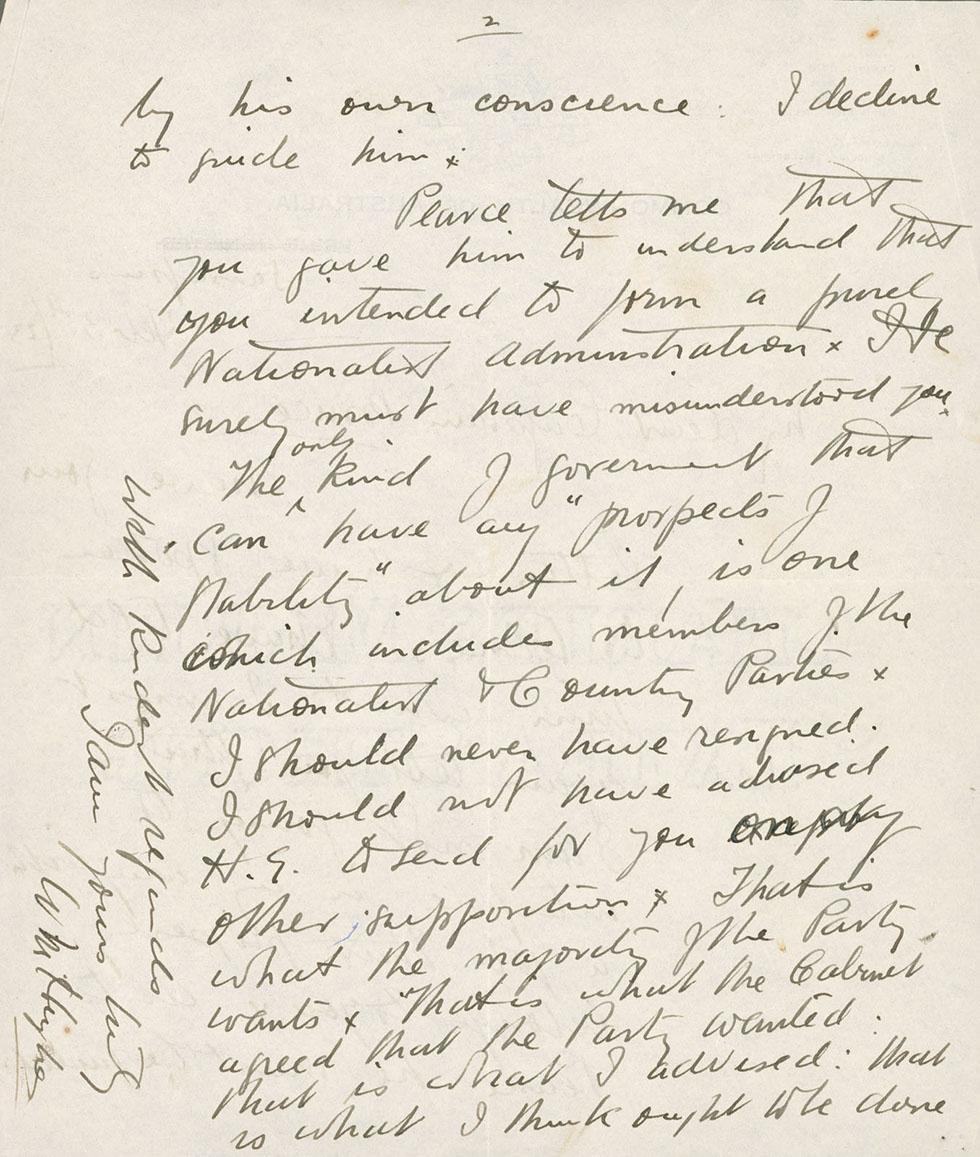
Page 2 of a letter from resigning Prime Minister William Hughes to incoming Prime Minister Stanley Bruce, dated 3 February 1923. NAA: A1492, 1, p.19
14 November 1925
At this election, the first where voting was compulsory, Bruce’s Nationalist Party wrested 7 House of Representatives seats from the Labor Party. The Country Party maintained their 14 seats, and the Bruce–Page government continued as a coalition.
17 November 1928
The Nationalist Party platform focused on the threat of ‘Bolshevism’ should Labor take office. Though Labor won 31 seats, the coalition was returned to government as the Nationalist Party held 29 seats and the Country Party 13.
12 October 1929
Bruce was forced to another general election only 11 months into his third term when William Hughes led five other Nationalist members across the floor to vote with the Labor Opposition. With the government unable to marshal a majority in the House of Representatives, the Governor-General dissolved the parliament so a general election could be held.
At this election, 4 weeks after the Hughes-led revolt, the Nationalist Party lost 15 seats to Labor, one of them the Prime Minister’s own seat of Flinders. The Scullin Labor government took office with 46 of the 75 House of Representatives seats.
19 December 1931
Bruce regained the seat of Flinders for the United Australia Party led by Joseph Lyons, and resigned his seat to become Australian High Commissioner to Britain in 1933.
Sources
These brief election results relate only to this Prime Minister. They are drawn from the online sources below, where further information can be found.
Australian Electoral Commission: Election results
University of Western Australia: Australian Government and Politics Database

